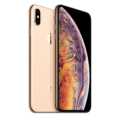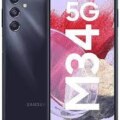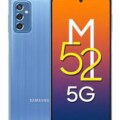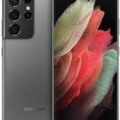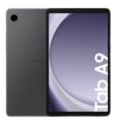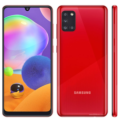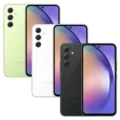- Home
- All Products
- Mobiles
- Apple iPhone 14 Plus Price & Specs
Apple iPhone 14 Plus Price & Specs
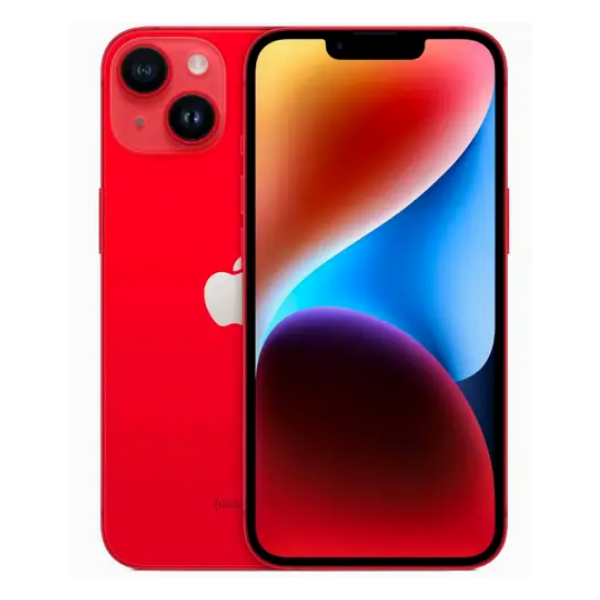

-
Processor: Apple A15 Bionic
-
RAM: 6 GB
-
Storage: 128 GB, 256 GB, 512 GB
-
Display: 6.7
-
Camera: 12 MP
-
Battery: IOS 16
Specs
General
| Device Type | Smart Phone |
| Model | Apple iPhone 14 Plus |
| Announced | 09 September, 2022 |
| Released | 07 October, 2022 |
| Status | Available |
Network
| 2G Network |
SIM1: GSM 850 / 900 / 1800 / 1900 SIM2: GSM 850 / 900 / 1800 / 1900 |
| 3G Network |
HSDPA 850 / 900 / 1700(AWS) / 1900 / 2100 |
| 4G Network |
LTE |
| 5G Network |
SA/NSA/Sub6 |
| SIM <strong>SIM</strong> (Subscriber Identity Module) is a small card that contains mobile network subscriber's account information. This allows the phone using the card to attach to a mobile network. The SIM card is most commonly associated with GSM and UMTS mobile networks. Moving a SIM card from one phone to another allows a subscriber to switch mobile phones without having to contact their mobile network carrier. SIM cards can also be used by a phone to store limited amounts of data, such as phone numbers and text messages. | Nano SIM |
| Dual SIM | eSIM |
Design
| Type <strong>Design Type</strong> called form factor refers to a mobile phone's size, shape, and style as well as the layout and position of major components of phone. There are three major form factors seen in mobile phones => bar phones, folding phones and sliding phones. | Bar |
| Dimensions | 160.8 x 78.1 x 7.8 mm |
| Weight | 203 g |
| Material | Glass front (Gorilla Glass), glass back (Gorilla Glass), aluminum frame, Rated IP68 (maximum depth of 6 meters up to 30 minutes) under IEC standard 60529 |
| Colors |
Midnight, Purple, Starlight, Blue, Red |
Display
| Display Type <strong>Display Technology => </strong> A number of display technologies and types used in mobile phones => TFT (Thin Film Transistor), IPS (In-Place Switching), OLED (Organic Light Emitting Diode), AMOLED (Active-Matrix Organic Light-Emitting Diode), Super AMOLED (an even advanced version of AMOLED), Resistive Touchscreen (Resistive touchscreens contain two layer of conductive material with a very small gap between them which acts as a resistance), Capacitive Touchsceen (Capacitive touchscreen technology consists of a layer of glass coated with a transparent conductor) | IPS LCD |
| Size | 6.7 Inches |
| Resolution | 1284 x 2778 Pixels |
| Display Colors <strong>Display Colors</strong> is refers to the number of different shades of colors that the screen is capable of displaying => 64K colors, 256K colors and 16 million colors, Obviously 16M is highest available range of colors and better than others. | 16M colors |
| Pixel Density <strong>Pixel Density (PPI)</strong> is refers to the concentration of pixels on a particular display, measured in pixels per inch (ppi). Pixel density is calculated by dividing the diagonal pixel resolution of a display by its diagonal size, higher pixel density better display quality. | 457 PPI |
| Display Protection <strong>Display Protection => </strong> Gorilla Glass is a special alkali-aluminosilicate glass shield with exceptional damage resistance that helps protect mobile displays from scratches, drops, and bumps of everyday use, It is always better to go for a smartphone with Gorilla Glass for that added protection and peace of mind. | Scratch-resistant glass, oleophobic coating |
| Features |
HDR10, Dolby Vision, 800 nits (HBM), 1200 nits (peak) |
Software
| Operating System <strong>OS => </strong> Every computer system run on a base software called Operating System (OS). Operating System controls all basic operations of the computer (such as smartphone, PDAs, tablet computers and other handheld devices). The Operating System allows the user to install and run third party applications (apps), apps are used to add new functionality to the device. | IOS 16 |
| User Interface <strong>UI</strong> or user interface of a device is the look and feel of the on-screen menu system. How it works, its color scheme, how it responds to button presses, all of these things are part of the user interface. | ios UI |
Hardware
| Chipset <strong>Chipset</strong> is a group of integrated circuits designed to perform one or a more dedicated functions, often with real time computing constraints, Popular smartphones are equipped with more advanced embedded chipsets that can do many different tasks depending on their programming. | Apple A15 Bionic (5 nm) |
| CPU <strong>CPU</strong> (Central Processing Unit) mostly known as processors, CPU processes instructions in order to carry out certain functions that make your device operate properly. Processors are often described as the brain of computers, smartphones and tablets, Smartphones and tablets rely on processors to carry out their every task, Processors are an incredibly important factor in selecting any type of computing device, including your smartphone. | Hexa-core (2 x 3.23 GHz Avalanche + 4 x 1.82 GHz Blizzard) |
| GPU <strong>GPU</strong> (Graphics Processing Unit) is a single-chip processor designed to rapidly manipulate and alter memory to accelerate the creation of images in a frame buffer intended for output to a display, This includes things such as lighting effects, object transformations, and 3D motion. | Apple GPU (5-core graphics) |
| RAM (Memory) <strong>RAM</strong> (Random Access Memory) is a type of computer memory that can be accessed randomly, any byte of memory can be accessed without touching the preceding bytes that allows information to be stored and accessed quickly from random locations. RAM is the most common type of memory found in computer systems, smartphones, tablets and other electronic devices. | 6 GB |
| Internal Storage <strong>Internal Storage</strong> is a data storage space (flash memory) mostly used in smartphones, tablets and other electronic devices where operating system, apps, music, photos, videos, files and other user data Is stored. | 128 GB, 256 GB, 512 GB |
| Card Slot <strong>Memory Card Slot</strong> is a special slot for inserting a memory card. Memory cards allow you to expand the phone's built-in memory, A memory card (sometimes called a flash memory card or a storage card) is a small storage medium used to store data such as text, pictures, audio, and video, for use on small, portable or remote computing devices such as mobile phones, mp3 players, digital cameras. | |
| Sensors <strong>Sensors</strong> are electronic components that detects and responds to some type of input from the physical environment. The specific input could be light, heat, motion, moisture, pressure and location, The output is generally a signal that is converted to use in computing systems, a location sensor, such as a GPS receiver is able to detect current location of your electronic device. |
Accelerometer, Barometer, Compass, Face ID, Gyro, Proximity, Ultra Wideband (UWB) support |
Camera
| Primary <strong>Camera</strong> is able to capture photographs and usually videos, The most important characteristics of a camera are the resolution (measured in megapixels), lens focus type (fixed or automatic), higher megapixel cameras are known to capture higher quality photos, but not always a good measurement of the photos quality. | Dual Camera: 12 MP, f/1.5, 26mm (wide), dual pixel PDAF, sensor-shift OIS + 12 MP, f/2.4, 13mm, (ultrawide), LED Flash |
| Secondary | Dual Camera: 12 MP, f/2.2, 23mm (wide), 1/3.6" + SL 3D, (depth/biometrics sensor), HDR, Cinematic mode (4K@30fps), Video (4K@24/25/30/60fps, 1080p@25/30/60/120fps, gyro-EIS) |
| Video | 4K@24/25/30/60fps |
| Camera Features |
HDR (photo/panorama), Video (4K@24/25/30/60fps, 1080p@25/30/60/120/240fps, HDR, Dolby Vision HDR (up to 60fps), Cinematic mode (4K@30fps), stereo sound rec.) |
| Flash <strong>Flash Light => </strong> There is commonly two types of flash lights are used in camera mobile phones, LED Flash (LED flash offers lower power consumption with drive circuitry that takes up very little room, LEDs can be strobed faster than any other light source), Xenon Flash (xenon flash produces an extremely intense full-spectrum white light for a very short duration) |
Connectivity
| Wi-fi <strong>Wi-Fi</strong> is a popular wireless networking technology using radio waves to provide high-speed network connections that allows devices to communicate without cords or cables, Wi-Fi is increasingly becoming the preferred mode of internet connectivity all over the world. | Wi-Fi 802.11 a/b/g/n/ac/6, dual-band, hotspot |
| Bluetooth <strong>Bluetooth</strong> is a wireless communications technology for exchanging data between mobile phones, headsets, computers and other network devices over short distances without wires, Bluetooth technology was primarily designed to support simple wireless networking of personal consumer devices. | v5.3 with A2DP, LE |
| GPS <strong>GPS</strong> The Global Positioning System is a satellite-based radio navigation system, GPS permits users to determine their position, velocity and the time 24 hours a day, in all weather, anywhere in the world, In order to locate your position, your device or GPS receiver must have a clear view of the sky. | Yes + A-GPS support, & GLONASS, GALILEO, QZSS |
| Wi-fi Hotspot | |
| USB | Lightning, USB 2.0 |
| NFC <strong>NFC</strong> (Near field communication) is a set of standards for smartphones and similar devices to establish peer-to-peer radio communications with each other by touching them together or bringing them into proximity, usually no more than a few inches. | |
| Wireless Charging <strong>Wireless Charging</strong> (Inductive Charging) uses an electromagnetic field to transfer energy between two objects. This is usually done with a charging station. Energy is sent through an inductive coupling to an electrical device, which can then use that energy to charge batteries or run the device. |
Data
| GPRS <strong>GPRS</strong> (General Packet Radio Service) is a packet oriented mobile data service on the 2G and 3G cellular communication system's global system for mobile communications (GSM), Generally, GPRS is used for the purpose of wireless data transfer, such as sharing pictures and videos or browsing the Internet via a mobile phone connection. | |
| EDGE <strong>EDGE</strong> (Enhanced Data GSM Environment) is a wireless network technology generally considered the next step in the 2G network offers data transfer rates up to four times faster than ordinary GSM networks, Generally, EDGE is used for the purpose of wireless data transfer, such as sharing pictures and videos or browsing the Internet via a mobile phone connection. | |
| Speed | GPRS, Edge, 3G (HSPA 42.2/5.76 Mbps), 4G LTE-A, 5G capable, EV-DO Rev.A 3.1 Mbps |
Messaging
| SMS <strong>SMS</strong> (Short Messaging Service) is a text messaging service component of phone, Web, or mobile communication systems. It uses standardized communications protocols to allow mobile phone devices to exchange short text messages over the networks. | Yes |
| MMS <strong>MMS</strong> (Multimedia Messaging Service) is a standard way to send messages that include multimedia content (audio clips, video clips and images) to and from mobile phones over wireless networks using the WAP protocol. | |
| Email <strong>Email</strong> (Electronic Mail) is a system for receiving, sending, and storing electronic messages, Similar to a letter, email is text messages that may contain files, images, or other attachments sent via the internet to a recipient by using applications and software prograps. An email address is required to receive email, and that address is unique to the user. | |
| IM <strong>IM</strong> (Instant Messaging) is an exchange of text messages through a software application, it enable you to create a kind of private chat room with another individual in order to communicate in real time over the Internet. | Yes |
Media
| Audio Playback | |
| Video Playback | |
| FM Radio | |
| Loudspeaker | |
| Ring Tones | MP3, WAV |
| Alert Types | Vibration, ringtones |
| Handsfree | No |
Battery
| Battery Type <strong>Battery Type => </strong> Cell phones run on various kinds of batteries depending on the manufacturer, phone size or shape and features. There are basically four types of cell phone batteries => Lithium Polymer, Lithium Ion, Nickel Metal Hydride and Nickel Cadmium. | Li-Ion (Lithium Ion) |
| Capacity <strong>Battery Capacity</strong> is a measure (typically in Amp-hr) of the charge stored by the battery, and is determined by the mass of active material contained in the battery. The battery capacity represents the maximum amount of energy that can be extracted from the battery under certain conditions. | 4323 mAh |
| Charging | Fast charging, 50% in 30 min (advertised), USB Power Delivery 2.0, MagSafe wireless charging 15W, Qi magnetic fast wireless charging 7.5W |
| Placement | Fixed |
If you want a big-screen experience for a reasonable price, the iPhone 14 Plus is a fantastic option. For $899, you get a 6.7-inch immersive display and exceptionally long battery life, making this a more appealing choice than the standard iPhone 14 for some customers. The cameras are excellent, but when compared to Android flagships at this price, the lack of optical zoom and a 120Hz display are letdowns.
The iPhone 14 Plus, which will take the place of the mini model in Apple’s lineup, is made to provide consumers with the large-screen iPhone they’ve allegedly been waiting for without having to pay the higher Pro price.
Table of Contents
iPhone 14 Plus Specs
- Body: 160.8×78.1×7.8mm, 203g; Glass front (Corning-made glass), glass back (Corning-made glass), aluminum frame; IP68 dust/water resistant (up to 6m for 30 mins), Apple Pay (Visa, MasterCard, AMEX certified).
- Display: 6.70″ Super Retina XDR OLED, HDR10, Dolby Vision, 800 nits (HBM), 1200 nits (peak), 1284x2778px resolution, 19.47:9 aspect ratio, 458ppi.
- Chipset: Apple A15 Bionic (5 nm): Hexa-core (2×3.23 GHz Avalanche + 4×1.82 GHz Blizzard); Apple GPU (5-core graphics).
- Memory: 128GB 6GB RAM, 256GB 6GB RAM, 512GB 6GB RAM; NVMe.
- OS/Software: iOS 16, upgradable to iOS 16.0.3.
- Rear camera: Wide (main): 12 MP, f/1.5, 26mm, 1/1.7″, 1.9µm, dual pixel PDAF, sensor-shift OIS; Ultra wide angle: 12 MP, f/2.4, 13mm, 120˚.
- Front camera: Wide (main): 12 MP, f/1.9, 23mm, 1/3.6″, PDAF; Depth: SL 3D.
- Video capture: Rear camera: 4K@24/25/30/60fps, 1080p@25/30/60/120/240fps, HDR, Dolby Vision HDR (up to 60fps), Cinematic mode (4K@30fps), stereo sound rec; Front camera: 4K@24/25/30/60fps, 1080p@25/30/60/120fps, gyro-EIS.
- Battery: 4323mAh; Fast charging, 50% in 30 min (advertised), USB Power Delivery 2.0, MagSafe fast wireless charging 15W, Qi wireless charging 7.5W.
- Misc: Face ID, accelerometer, gyro, proximity, compass, barometer; NFC; stereo speakers; Ultra Wideband (UWB) support, Emergency SOS via satellite (SMS sending/receiving).
iPhone 14 Plus Performance
The iPhone 14 Plus is identical to the iPhone 14 in every significant way besides its larger screen and longer battery life. Its A15 Bionic chip performs identically, and this model is equally capable of handling new iOS 16 features like iCloud Shared Photo Library and Lock Screen widgets.
Although it is slightly larger than the iPhone 14 (146.7 x 71.5mm vs. 160.8 x 78.1mm), the phone itself doesn’t feel truly bulky. It is also just as thin as the iPhone 14 at 7.8mm and feels just as well-built, smooth, and solid. Thanks to iOS 16’s Reachability mode, which can be activated from Settings > Accessibility > Touch, some display elements are positioned closer to the bottom of the screen when using the iPhone in portrait orientation, making even the larger screen size less of a barrier.
iPhone 14 Camera and Storage
Similar to the iPhone 14, the iPhone 14 Plus lacks the 48MP triple-lens camera system and the new Dynamic Island of the iPhone 14 Pro or Pro Max. You can only store up to 512GB of data on the device, in contrast to the iPhone 14 Pro and 14 Pro Max, which can store up to 1TB of data.
Iphone 14 Plus Battery Life
iPhone 14 has a longer battery life which is another significant advantage. The iPhone 14 Plus gives you an additional six hours of battery life, which is beneficial for other use cases as well, including web browsing in Safari and photo editing. The standard iPhone 14 can last for up to 20 hours while playing video, but the iPhone 14 Plus gives you an additional six hours.
iPhone 12 Plus Pros & Cons
| Pros | COns |
|---|---|
| Strong performance | No telephoto lens |
| Lightweight design | Charging could be faster |
| Big screen for a good price | Lacks 120Hz display |
| Long battery life | Minimal differences to the iPhone 13 |
| Great cameras with Action mode video | ESIM transition will be easy for most but painful for some |
iPhone 14 Plus Price in Pakistan
Apple iPhone 14 Plus price in Pakistan is probably lower, though, as it is now an older model and has been replaced by several newer iPhone models like the iPhone 14 pro max but the new iPhone 14 Plus price in Pakistan is around 448,000. Check websites like iShopping, OLX, or Daraz, to find the most recent iPhone 14 Plus prices in Pakistan. Remember that prices on these websites can vary, and you should always exercise caution when buying from individual sellers.
Apple iPhone 14 Plus different City Prices in Pakistan
| City | Price |
|---|---|
| Price in Islamabad | Rs448,000/- |
| Price in Quetta | Rs448,000/- |
| Price in Karachi | Rs448,000/- |
| Price in Peshawar | Rs448,000/- |
| Price in Faisalabad | Rs448,000/- |
| Price in Lahore | Rs448,000/- |
Conclusion
iPhone 14 Plus is a fantastic phone for the majority of us, particularly if you want the bigger screen and longer battery life of the iPhone 14 Pro Max but don’t want to pay the extra “pro” premium or have an older iPhone, like an iPhone 11. The iPhone 15 might be worth waiting for you if you own a more recent model.
What is iPhone 14 Plus price in Pakistan?
iPhone 14 Plus price in Pakistan is Rs: 448,000/-.
What is Apple iPhone 14 Plus Release Date?
The launch date of the Apple iPhone 14 Plus is October 7, 2022.
What is iPhone 14 Plus size?
The size of iPhone 14 Plus is 6.7 inches and its weight is 203 Grams.
iPhone 14 Plus colors?
Midnight, Purple, Starlight, Blue, Red
iPhone 14 Plus battery mah?
4323 mAh
Is iPhone 14 Plus waterproof?
With an IP68 rating, the phone 14 Plus is water-resistant and can withstand immersion in water for up to 30 minutes at a depth of 1 meter.
Does iPhone 14 Plus have 5G?
Yes, It’s compatible with 5G.
Disclaimer: The Apple iPhone 14 Plus prices listed on this page are sourced from local shops and dealers and are updated daily. While we strive for accuracy, we cannot guarantee that the price information of the Apple iPhone 14 Plus provided on this page is 100% correct, as human error is possible. We recommend that you visit your local shop for exact pricing information. Thank you for your understanding.

